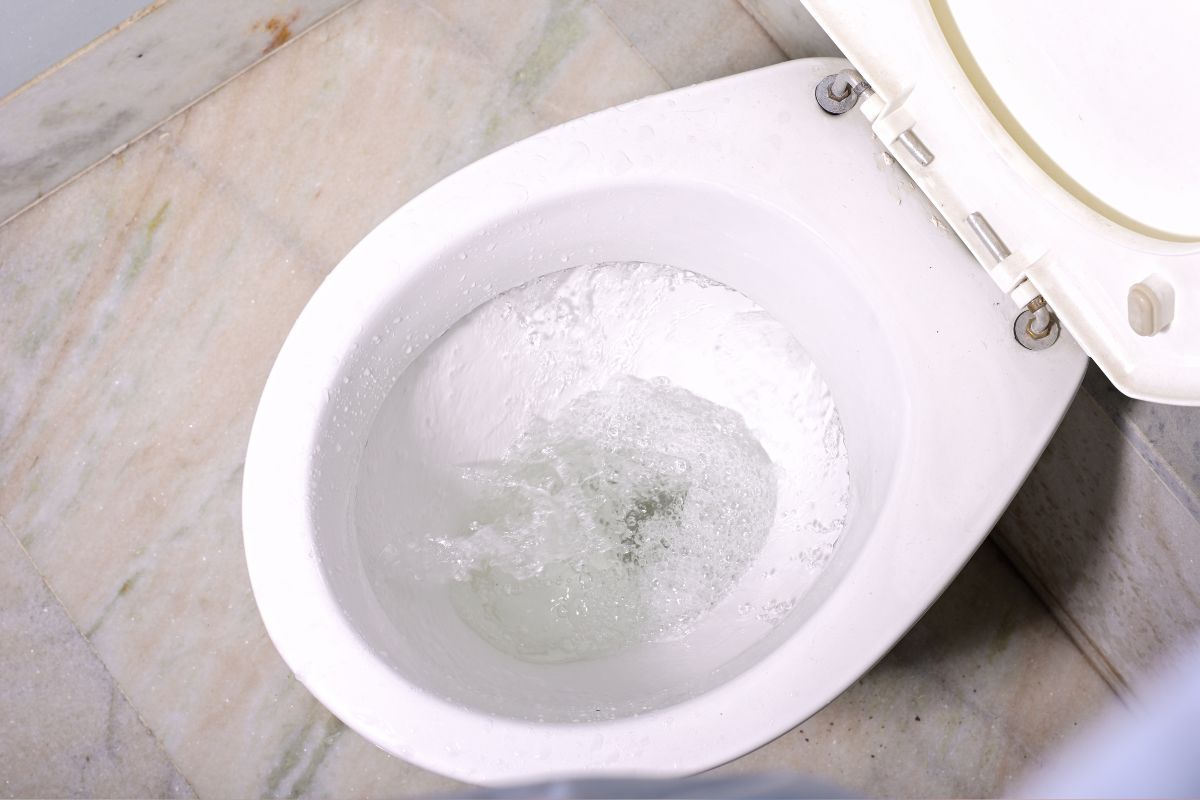Show table of content Hide table of content
Toilet bowls often become a battleground against stubborn stains and discoloration over time. The challenge of maintaining that pristine white ceramic surface can be frustrating for many homeowners. However, there’s a simple yet powerful solution that can transform your yellowed or stained toilet bowl back to its original brightness in just 20 minutes – sodium percarbonate. This eco-friendly cleaning powerhouse works efficiently without harsh chemicals, making it an ideal choice for environmentally conscious households seeking effective bathroom cleaning solutions.
The power of sodium percarbonate for toilet bowl whitening
Sodium percarbonate stands out as a remarkable cleaning agent for bathroom fixtures. This white crystalline powder, often mistaken for baking soda, contains hydrogen peroxide in a stable, solid form. When dissolved in water, it releases oxygen bubbles that effectively break down organic stains and discoloration on contact. The active oxygen works by oxidizing stains and killing bacteria simultaneously, addressing both the aesthetic and hygiene aspects of toilet maintenance.
Unlike bleach and other chemical cleaners that emit harsh fumes, sodium percarbonate offers a gentler approach to cleaning without compromising on effectiveness. Many household cleaning experts recommend it as a versatile alternative to conventional cleaning products. For those seeking energy-efficient household solutions, this cleaning method aligns perfectly with sustainable living practices.
Home This fly trap is truly effective – just two kitchen products are all you need.
The whitening power of sodium percarbonate comes from its ability to penetrate deep into the porcelain surface, removing not just surface stains but also attacking discoloration within micropores. This comprehensive cleaning action explains why a single application can restore the brilliant white finish that factory-new toilet bowls display. Most importantly, it accomplishes this without damaging the ceramic surface or compromising septic systems.
Simple 20-minute method for brilliant results
Transforming your discolored toilet bowl requires minimal preparation and effort. Begin by gathering the necessary supplies: three tablespoons of sodium percarbonate, one liter of hot water, protective gloves, and your regular toilet brush. The protection is important as sodium percarbonate can cause skin irritation upon direct contact. Safety should always be a priority when working with cleaning agents, similar to how awareness protects you from potential digital threats.
Start by boiling one liter of water and carefully transferring it to a heat-resistant container. Add three tablespoons of sodium percarbonate powder and stir until completely dissolved. The solution will begin to activate immediately, releasing oxygen bubbles. Pour this mixture around the toilet bowl rim, ensuring complete coverage of all stained areas. The hot water enhances the cleaning power by accelerating the chemical reaction.
Allow the solution to work undisturbed for exactly 20 minutes. During this time, the active oxygen molecules attack stubborn stains, breaking them down at a molecular level. After the waiting period, scrub the bowl thoroughly with your toilet brush, paying special attention to waterline marks and under-rim areas. The stains should lift away with minimal effort. Finish by flushing the toilet to rinse away the dissolved residue and cleaning solution.
Home Few people know it: putting a coin in the freezer is one of the best tricks to avoid problems.
Tackling extremely stubborn stains and mineral deposits
For toilets with severe discoloration or heavy mineral deposits, a more concentrated approach may be necessary. Creating a powerful cleaning paste combines the oxidizing properties of sodium percarbonate with the abrasive action of other natural cleaning agents. This approach works similarly to how consistent methods yield stronger results in other areas of life.
Mix four tablespoons of baking soda, two tablespoons of sodium percarbonate, and four tablespoons of citric acid powder in a small bowl. This creates a powerful cleaning compound that addresses multiple types of stains. The baking soda provides gentle abrasion, the sodium percarbonate delivers oxygen-based cleaning, and the citric acid dissolves mineral deposits and hard water stains.
Apply this dry powder mixture directly to the toilet bowl surface, focusing on heavily stained areas. For maximum effectiveness, perform this treatment in the evening and allow it to work overnight. The extended contact time gives the cleaning agents ample opportunity to break down even the most stubborn deposits. In the morning, scrub thoroughly and flush to reveal a remarkably whiter toilet bowl.
Maintaining long-lasting whiteness with regular treatments
Preserving your toilet’s renewed brightness requires establishing a simple maintenance routine. Just as eliminating costly behaviors leads to financial stability, eliminating poor cleaning habits leads to consistently clean bathrooms. Weekly applications of a diluted sodium percarbonate solution can prevent new stains from becoming established.
Create a preventative solution by dissolving one tablespoon of sodium percarbonate in warm water. Pour this around the bowl once weekly, let it sit for five minutes, then brush briefly and flush. This quick maintenance ritual prevents mineral buildup and keeps the porcelain surface pristine without extensive scrubbing or harsh chemicals.
Incorporating this cleaning approach into your regular household routine saves both time and money. Store-bought toilet cleaners often contain unnecessary fragrances and chemicals that can irritate sensitive individuals. By contrast, sodium percarbonate offers an effective, economical alternative that delivers professional results. Understanding the power of simple rules and systems applies perfectly to home cleaning efficiency.
Communication within households about cleaning responsibilities also plays a vital role in maintaining bathroom cleanliness. Establishing clear expectations about who handles which cleaning tasks prevents neglect and ensures regular maintenance. Just as effective communication strengthens relationships, it also strengthens home maintenance systems, ensuring everyone contributes to keeping shared spaces clean and hygienic.


